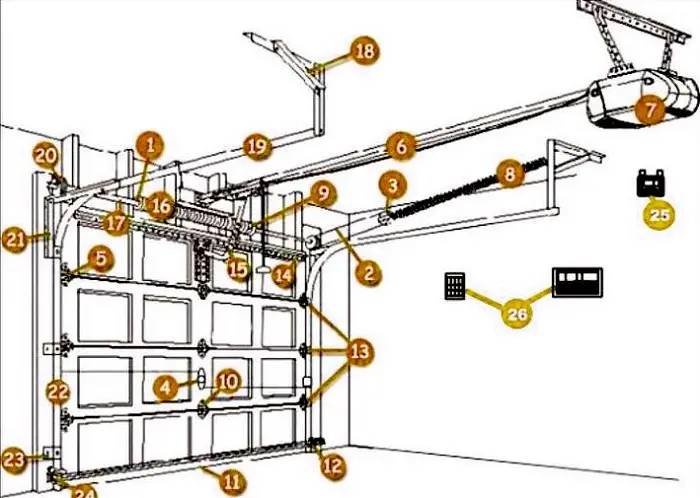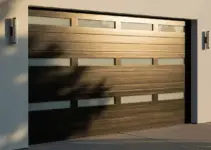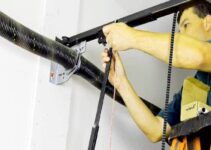If you are a homeowner, you are likely aware of the importance of a functioning garage door. However, when something goes wrong with your garage door, it can be challenging to know which part is causing the problem.
We will provide a comprehensive garage door parts diagram, along with explanations of each component.
By the end of this article, you will have a better understanding of how your garage door works and be able to troubleshoot any issues that may arise.
How a Garage Door Works
Before we delve into the specific parts of a garage door, it’s important to understand how the system works as a whole. A garage door operates by a system of springs, tracks, cables, and other parts that work together to lift and lower the door.
The garage door opener is responsible for providing the necessary force to open and close the door. The opener uses a motor to power the trolley, which is attached to the door by a carriage. As the trolley moves along the track, the door opens or closes.
Garage Door Parts Diagram

The above diagram illustrates the different components of a garage door. Let’s go through each component in detail.
Garage Door Springs
Springs are an essential part of the garage door system. They provide the necessary force to lift and lower the door. There are two types of garage door springs: torsion springs and extension springs.
Torsion Springs
Torsion springs are typically located above the door and are mounted to a metal shaft. They work by twisting and untwisting as the door is opened and closed. Torsion springs are capable of supporting more weight than extension springs, and they are considered to be safer because they are less likely to break.
Extension Springs
Extension springs are located on either side of the door and work by stretching and contracting. They are typically less expensive than torsion springs but are not as durable.
Garage Door Tracks
Garage door tracks are responsible for guiding the door as it opens and closes. The tracks are typically made of metal and are attached to the ceiling and the walls of the garage. There are two types of tracks: vertical and horizontal.
Garage Door Rollers
Rollers are responsible for allowing the door to move up and down along the tracks. They are typically made of nylon or steel and are mounted to the sides of the door.
Garage Door Hinges
Hinges are responsible for connecting the individual panels of the garage door. They are typically made of metal and are attached to the door panels with bolts.
Garage Door Opener
The garage door opener is responsible for providing the necessary force to open and close the door. There are several components of the garage door opener:
Motor
The motor is the main component of the garage door opener. It provides the power to move the trolley along the track.
Trolley
The trolley is a metal arm that connects the motor to the door. It moves along the track, pulling the door open or pushing it closed.
Carriage
The carriage is the part that connects the trolley to the door. It typically consists of a metal bar that attaches to the top of the door.
Sensors
Sensors are located on either side of the garage door and are responsible for detecting any obstacles in the door’s path. If an object is detected, the sensors will stop the door from closing, preventing any damage.
Garage Door Cables
Cables are responsible for attaching the door to the springs and the bottom bracket. They are typically made of steel and are coated in plastic to protect them from wear and tear.
Bottom Bracket
The bottom bracket is located at the bottom of the door and is responsible for holding the cables in place. It is typically made of metal and is attached to the wall of the garage.
Conclusion
Understanding the different parts of a garage door is essential for maintaining its functionality. By familiarizing yourself with each component, you will be able to troubleshoot any issues that may arise and take proper care of your garage door. If you are unsure about any part of your garage door system, it is best to seek professional help.


